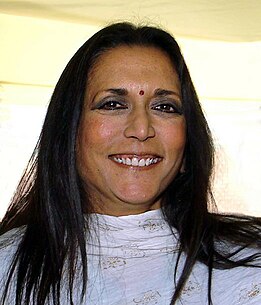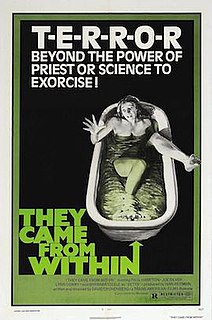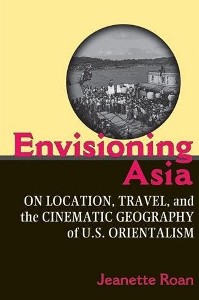
A cult film or cult movie, also commonly referred to as a cult classic, is a film that has acquired a cult following. Cult films are known for their dedicated, passionate fanbase which forms an elaborate subculture, members of which engage in repeated viewings, dialogue-quoting, and audience participation. Inclusive definitions allow for major studio productions, especially box office bombs, while exclusive definitions focus more on obscure, transgressive films shunned by the mainstream. The difficulty in defining the term and subjectivity of what qualifies as a cult film mirror classificatory disputes about art. The term cult film itself was first used in the 1970s to describe the culture that surrounded underground films and midnight movies, though cult was in common use in film analysis for decades prior to that.

David Paul Cronenberg is a Canadian film director, screenwriter, and actor. He is one of the principal originators of what is commonly known as the body horror genre, with his films exploring visceral bodily transformation, infection, technology, and the intertwining of the psychological with the physical. Cronenberg is best known for exploring these themes through sci-fi horror films such as Shivers (1975), Scanners (1981), Videodrome (1983), and The Fly (1986), though he has also worked in multiple genres throughout his career.
A cameo role, also called a cameo appearance and often shortened to just cameo, is a brief appearance or voice part of a well-known person in a work of the performing arts. These roles are generally small, many of them non-speaking ones, and are commonly either appearances in a work in which they hold some special significance or renowned people making uncredited appearances. Short appearances by celebrities, film directors, politicians, athletes or musicians are common. A crew member of the movie or show playing a minor role can be referred to as a cameo as well, such as Alfred Hitchcock's frequent cameos.

Deepa Mehta, is an Indo-Canadian film director and screenwriter, best known for her Elements Trilogy, Fire (1996), Earth (1998), and Water (2005).

Shivers, also known as The Parasite Murders and They Came from Within, and, for the French-Canadian distribution, Frissons, is a 1975 Canadian science fiction body horror film written and directed by David Cronenberg and starring Paul Hampton, Lynn Lowry, and Barbara Steele. The original shooting title was Orgy of the Blood Parasites.

Histoire(s) du cinéma is an 8-part video project begun by Jean-Luc Godard in the late 1980s and completed in 1998. The longest, at 266 minutes, and one of the most complex of Godard's films, Histoire(s) du cinéma is an examination of the history of the concept of cinema and how it relates to the 20th century; in this sense, it can also be considered a critique of the 20th century and how it perceives itself. The project is widely considered Godard's magnum opus.

Short Sharp Shock is a 1998 film directed by Turkish-German director Fatih Akın.
Blood and Donuts is a 1995 Canadian supernatural comedy horror film directed by Holly Dale, written by Andrew Rai Berzins, and starring Gordon Currie and Helene Clarkson. David Cronenberg plays a cameo role as the local crime boss. The film features a vampire who is accidentally awakened after 25 years of sleep and starts to shyly make contact with the mortal world around him. As he interacts and begins to care for the people around him, he gets mixed up in their problems and they in his.
Jorge Sanjinés is a Bolivian film director and screenwriter. He founded the production group Grupo Ukamau. He won the ALBA Prize for Arts in 2009.
Gene D. Phillips, S.J. was an American author, educator, and Catholic priest.
The Baron is a 2011 Portuguese film directed by Edgar Pêra, based on the 1942 novella of the same name by Branquinho da Fonseca.
Xavier Charles Mendik is an English documentary filmmaker, author, and festival director. He is an associate professor in film and director of graduate studies in the School of Media at Birmingham City University, and formerly at the University of Brighton. He also runs the Cult Film Archive and is the director of Cine-Excess International Film Festival.

The Cult Film Reader is a 2008 book edited by Ernest Mathijs and Xavier Mendik. It collects essays by Susan Sontag, Umberto Eco, and others, each on the topic of cult followings, cult films, and related topics. Director and producer Roger Corman wrote the introduction.
Ernest Mathijs is a professor at the University of British Columbia, where he teaches film. He has published several books on cult films.
Nightmare Movies is a non-fiction book about horror films by British critic and novelist Kim Newman. It was first published in 1985 and had later editions published in 1988, 1989, and 2011. The initial printing was 160 pages, but was expanded to 633 pages.

Envisioning Asia: On Location, Travel, and the Cinematic Geography of U.S. Orientalism is a 2010 American book written by Jeanette Roan, about Asian Americans in Hollywood films. It also discusses the "on location" shooting of Hollywood films in Asia. It was published by University of Michigan Press.
Dejan Ognjanović is a contemporary Serbian horror author, literary critic, film critic, editor and a translator. He was the first in Serbia, and the Balkans, to write a doctoral dissertation on poetics of the horror genre. In Serbia, Ognjanović is considered a connoisseur of the horror genre, both in literature and film.
Martin Barker is a British scholar of media studies and cultural studies. He is now an Emeritus Professor at Aberystwyth University, having previously taught at the University of the West of England and the University of Sussex. Over the course of his career he has written or co-edited fifteen books. He is known for being one of the pioneers behind the concept of cultural racism, which he termed "new racism".
The Forty Days of Musa Dagh is a 1982 American film produced by John Kurkjian, written by Alex Hakobian, and directed by Sarky Mouradian. It is an adaptation of the novel The Forty Days of Musa Dagh, about the resistance to the Armenian genocide at Musa Dagh, at the time in Aleppo Vilayet, Ottoman Empire and now in Hatay Province, Turkey.
Thomas R. Cripps was an emeritus professor at Morgan State University in Baltimore who wrote and lectured about the history of African American cinema.








